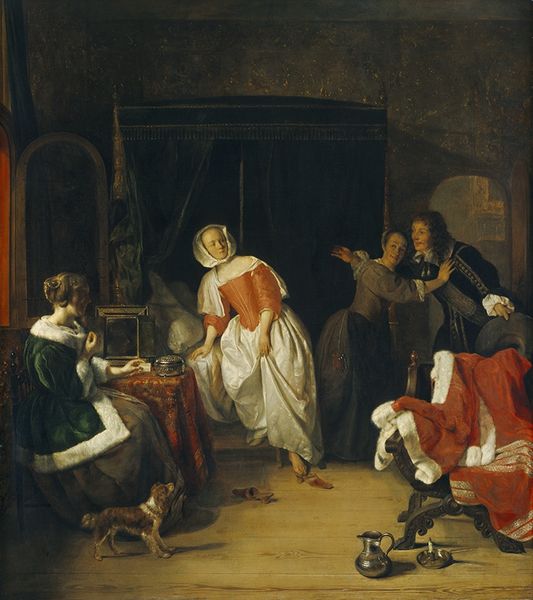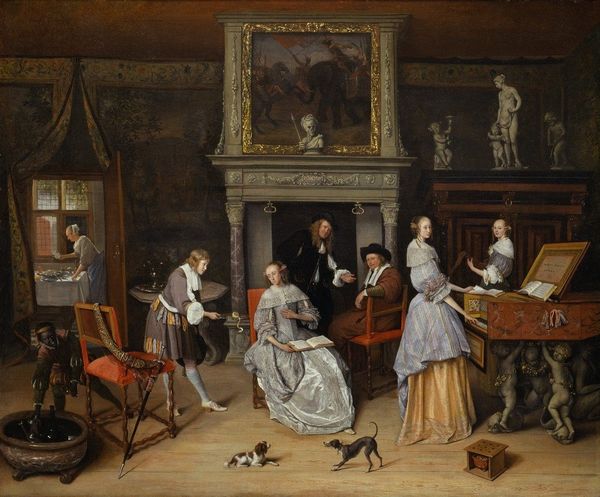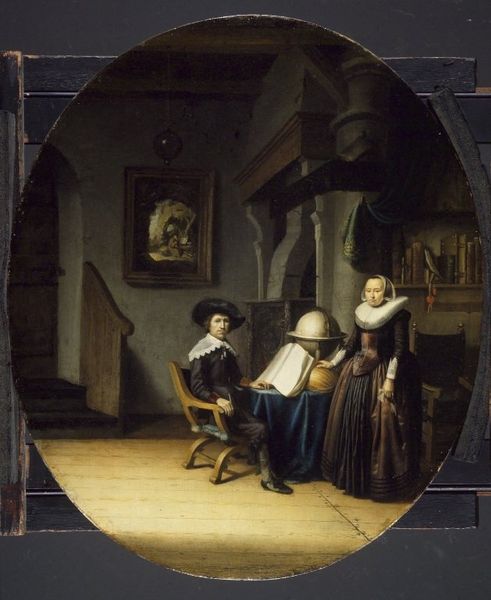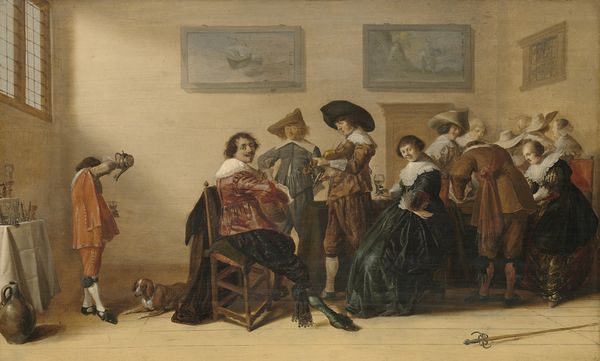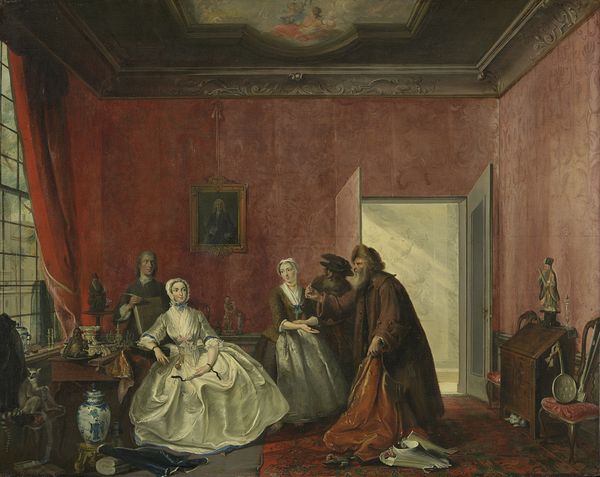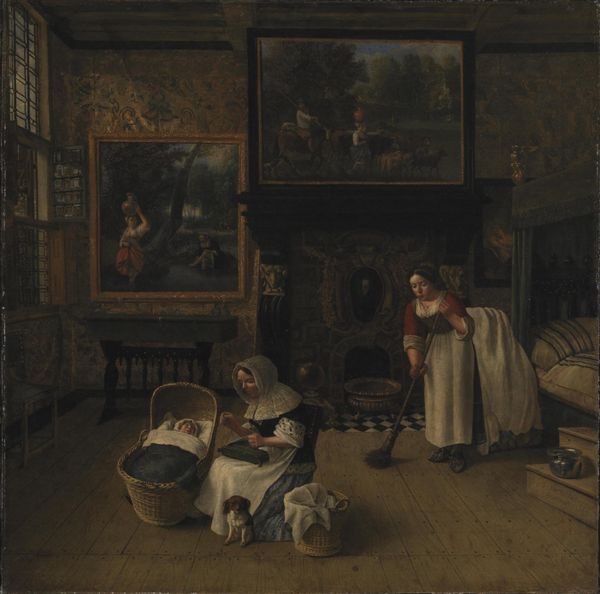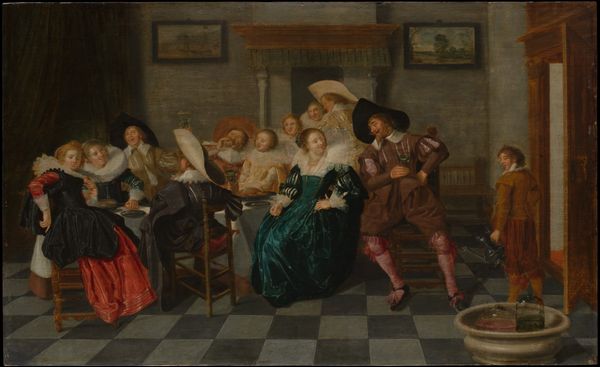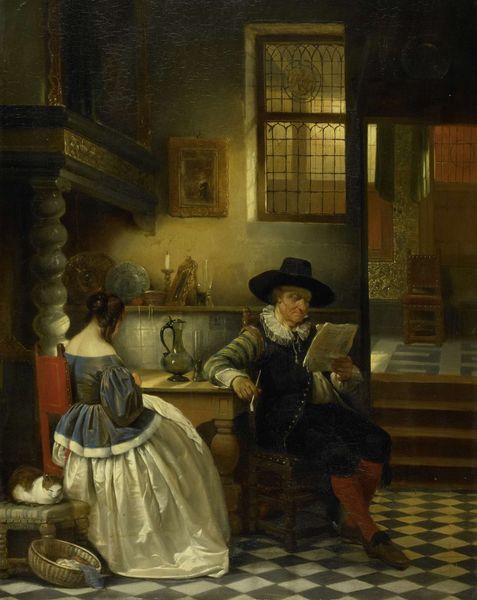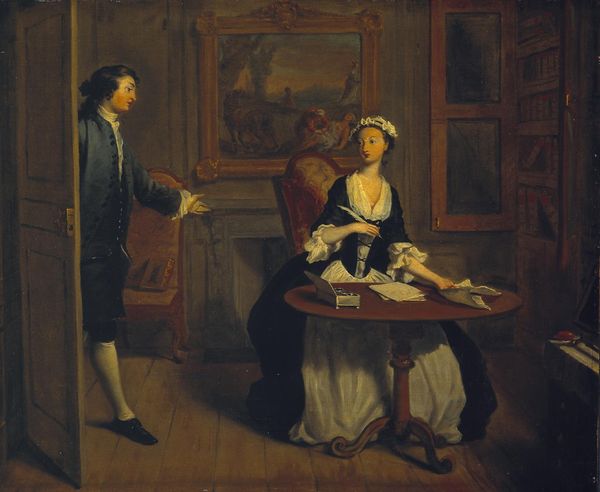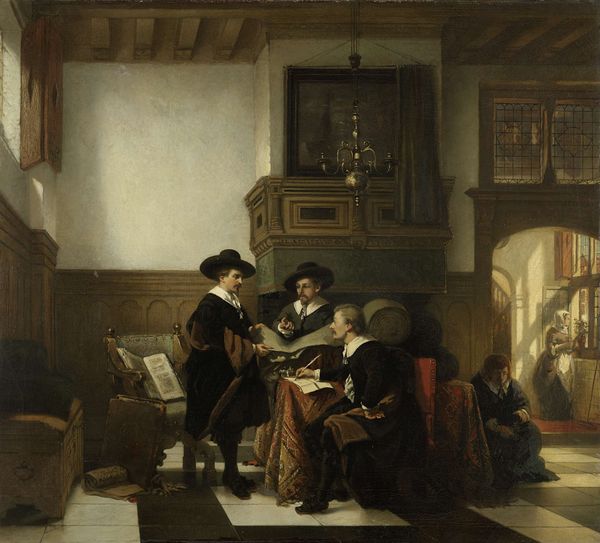
painting, oil-paint
#
portrait
#
baroque
#
dutch-golden-age
#
painting
#
oil-paint
#
oil painting
#
genre-painting
Dimensions: overall: 80 x 75 cm (31 1/2 x 29 1/2 in.) framed: 110.8 x 106 x 12.7 cm (43 5/8 x 41 3/4 x 5 in.)
Copyright: National Gallery of Art: CC0 1.0
Editor: Here we have Gerard ter Borch's "The Suitor's Visit," painted around 1658 with oil on canvas. I'm immediately drawn to the woman's satin dress. It's rendered with such precision, you can almost feel the fabric. What stylistic choices stand out to you? Curator: Indeed. Observe how the composition unfolds: a clear division of light and shadow creates depth. Notice the balance – the suitor’s dark figure counterweighted by the light illuminating the woman. Furthermore, analyze how ter Borch masterfully used color; the bright red bodice pops against the muted background, immediately directing the eye. Editor: The textures are so varied too, from the soft fur of the dog to the hard surfaces of the doorway. Is there any particular element in this work where his mastery truly shines? Curator: Consider the play of light on the woman’s face and dress, and how that contrasts with the shadowed doorway and background. Ter Borch uses light not just to illuminate, but to guide our gaze and define spatial relationships within the composition. Reflect on the implications of the relatively dark interior. Does that support any reading? Editor: I guess that could symbolize secrecy, as if he's intruding on something private, almost creating a sense of voyeurism. It really makes you think about how color and composition are linked to meaning. Curator: Precisely. Considering only the form and materiality of the painting allows such an appreciation of intention and effect to emerge. Editor: This deeper analysis focusing on technique has given me such a great appreciation for the intent. I feel like I now have a greater understanding of how choices with color and composition impact our emotional responses.
Comments
No comments
Be the first to comment and join the conversation on the ultimate creative platform.


